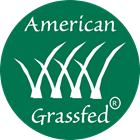
Grassfed animals—including cattle, sheep, goats, and bison—are not only valuable sources of nutrient-dense food but also play a pivotal role in restoring and maintaining healthy soils through natural behaviors and well-managed grazing systems. By mimicking historic grazing patterns, these animals stimulate soil regeneration and enhance the resilience of agricultural landscapes—transforming degraded land into thriving ecosystems.
Rotational Grazing: A Catalyst for Soil and Plant Health

Rotational grazing involves moving livestock through a planned sequence of paddocks or pasture sections, allowing grazed areas adequate recovery time. This grazing management mimics the migration of wild herbivores and triggers several beneficial soil processes:
- Stimulates Root Growth: Grazing encourages plants to develop deeper and more extensive root systems in response to being grazed, which enhances root biomass and improves water and nutrient uptake. Deep roots also increase soil stability and reduce erosion risk.
- Increases Microbial Diversity: Plant roots exude sugars and nutrients that feed soil microbes. Grazing-induced root growth sustains diverse microbial communities essential for nutrient cycling, soil structure formation, and organic matter decomposition.
- Prevents Overgrazing: Rest periods allow vegetation to recover, maintaining competitive plant species that support overall pasture productivity and biodiversity.
Soil Aeration and Nutrient Cycling by Hoof Action and Manure

The physical impact of hoof action and manure deposition by grassfed animals contributes directly to soil fertility and structure:
- Hoof Aeration: As animals walk, their hooves puncture and loosen compacted soil layers, improving air and water infiltration. This natural soil ‘tillage’ helps roots access oxygen and water, promoting healthier plant growth.
- Manure as Natural Fertilizer: Livestock manure returns vital nutrients—nitrogen, phosphorus, potassium, and micronutrients—to the soil in organic forms readily used by soil organisms and plants. This nutrient recycling contrasts with synthetic fertilizers, which can disrupt microbial communities and leach into waterways.
- Manure Supports Soil Organic Matter: Organic inputs from manure feed soil microorganisms that break down residues into humus, improving soil water retention, nutrient holding capacity, and resilience.
Carbon Sequestration and Climate Benefits

Well-managed grassfed livestock systems enhance carbon capture by promoting healthy perennial grasslands with deep roots:
- Enhanced Soil Organic Carbon: The increase in root biomass and soil microbial activity results in greater sequestration of carbon in stable soil organic matter pools, locking away atmospheric CO2 for decades.
- Building Drought and Erosion Resilience: Improved soil structure from organic matter and active microbial communities increases moisture retention and reduces runoff, buffering pastures against drought and flooding events intensified by climate change.
Biodiversity and Ecosystem Health
Grassfed grazing contributes to rich biodiversity on farms and surrounding landscapes:
- Supports Diverse Plant Species: Targeted grazing pressures prevent dominance by single species and encourage the coexistence of native grasses, forbs, and legumes — enhancing floral diversity.
- Wildlife Habitat: Heterogeneous plant communities provide shelter, nesting sites, and food for pollinators, birds, insects, and soil fauna.
- Pest and Weed Control: Grazing animals selectively consume invasive or problematic plants, reducing the need for chemical herbicides while promoting ecological balance.
Nutrient-Dense Food and Sustainable Farming Systems
By integrating grassfed and pastured animals into regenerative grazing systems, farmers can produce food rich in essential nutrients while maintaining long-term land health. Compared to grain-fed livestock raised in intensive confinement, grassfed meats typically offer better fatty acid profiles, vitamins, and antioxidants.
This holistic approach aligns soil stewardship with animal welfare and climate resilience, forging agriculture that sustains both the planet and people.

Key Practices to Maximize Soil Stewardship by Grassfed Animals
- Implementing planned, rotational, or holistic grazing schedules.
- Avoid continuous grazing to prevent plant root exhaustion.
- Incorporating multispecies grazing (e.g., cattle with goats and sheep) to optimize pasture utilization and diversity.
- Restoring native or perennial grass species that build long-lasting soil health.
- Monitoring and adapting grazing intensity and timing based on pasture condition.
Sources
The Savory Institute — Holistic Management and Regenerative Agriculture
https://savory.global/regenerative-agriculture/
Rodale Institute — Regenerative Organic Agriculture and Soil Health
https://rodaleinstitute.org/why-organic/organic-farming-practices/soil-health/
USDA Natural Resources Conservation Service (NRCS) — Managed Grazing for Soil Health
https://www.nrcs.usda.gov/wps/portal/nrcs/detailfull/national/soils/health/?cid=nrcs142p2_053852
Scientific American — How Grazing Livestock Can Help Heal Soils and Fight Climate Change
https://www.scientificamerican.com/article/how-grazing-livestock-can-help-heal-soils-and-fight-climate-change/
Journal of Soil and Water Conservation (2023) — Effects of Rotational Grazing on Soil Health and Carbon Sequestration
https://www.jswconline.org/content/78/4/396
The Nature Conservancy — Grazing to Restore Soil and Water Health
https://www.nature.org/en-us/about-us/where-we-work/united-states/idaho/stories-in-idaho/grazing-to-restore-land/
Cornell University Cooperative Extension — Grazing Management and Soil Fertility
https://ecommons.cornell.edu/handle/1813/57163
